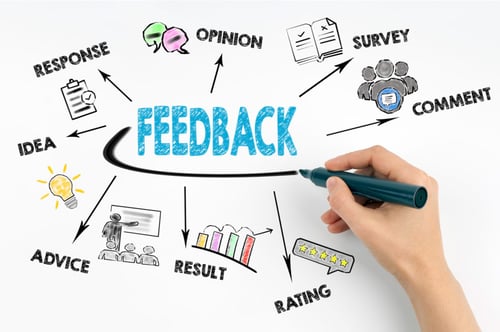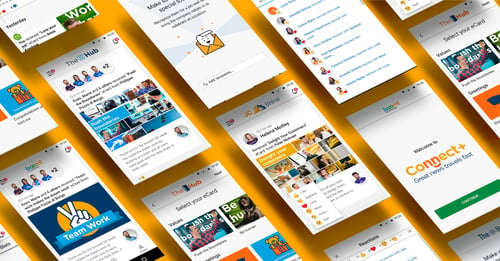Years ago, millennials copped a lot of bad press. This generation of employees, born anywhere between 1977 to 2000, was often described as “entitled” or “unmanageable.” But the tide is turning, and it may simply be because the oldest members of this generation are now doing the leading and managing. In fact, millennials now make up more of the workforce than any other generation. And we’re motivated by significantly different things compared to employees of other generations. (Yes, I fall in the “millennial” camp, too!)
By understanding what motivates millennials and adapting our employee engagement strategies – and our reward and recognition programs in particular – to align and support these motivators, we have an opportunity to attract and retain exceptional talent.
And before you clock out and think these motivators only apply to millennials, take a look. Many of the elements on the list below include things employees of any generation can benefit from.
6 Millennial Motivators
| 1. Purpose and meaning (not just pay) |
| 2. Transparency and ownership |
| 3. Frequent feedback |
| 4. Social |
| 5. Work/life balance enabled by technology |
| 6. Mobility |
1. Millennial employees want purpose over pay
While fair compensation is critical, the biggest salary package or fancy job title isn’t necessarily going to attract the best and brightest employees. Millennial employees want an employer-employee relationship that isn’t merely transactional.
Effective and impactful recognition and reward strategies connect employees to purpose, mission and values. It is designed to help them recognise that the day-to-day work they do contributes to achieving the company mission, and connects recognition to values that make your company culture unique.
2. Millennials are motivated by transparency
Transparency gives employees a sense of ownership and agency. Just as our physical ways of working have evolved to minimise closed or corner offices and now include more communal work spaces, our employees have evolved other ways of working to increase transparency and collaboration.
Employee expectations around information sharing have changed – commercial conversations are expected to go beyond the boardroom. Millennials, in particular, want regular business updates to ensure they feel informed and involved in the direction of the company.
This means recognition and reward programs with too much red tape or convoluted rules that disguise who is getting recognised and why, or points that mask the true value of a reward employees will often be met with defiance from employees, or simply be dismissed as untrustworthy or irrelevant.
Choosing a reward and recognition platform (or, as I prefer to say "recognition and reward") that provides transparency around the “who” is being recognised, as well as “when” and “why,” the more participation and take-up you will experience.

3. Millennials crave frequent feedback
Today, thanks to the internet, our people are accustomed to a hyper-feedback culture – we’re used to people giving us regular feedback about our actions in real time. And not only do we want to receive feedback, we also expect opportunities to give it.
So instead of recognition and reward being something that happens one to four times a year (as is the case with annual or quarterly awards!), impactful recognition and reward programs have an element that is always-on and provides an opportunity for honest, in-the-moment feedback.
Making recognition and communication a two-way street can open doors for a more engaged workforce. Consider the benefits of peer-to-peer or social recognition instead of only top-down – this provides employees with agency and ownership.

4. Using social media is normal – and necessary
This is a generation of employees who grew up and came of age when social media hit its peak; they use it to build and sustain connections, as well as present a better version of themselves. Employers who leverage this expectation are a step ahead. They add a social component to employee recognition by publishing an online recognition wall where people can like or comment when someone receives an eCard. Their program can also include elements like leaderboards, videos, blogs - anything that enables communication and connection.
Why? According to a study published in Harvard Business Review, using social media for work increases engagement and makes people less likely to leave their jobs. Employees who engage with coworkers online via social media platforms tend to be more motivated and come up with innovative ideas. Your recognition and reward program can encourage this by providing a digital space that allows employees to connect with each other.

5. Supporting flexible work is a must
A recent study by Gartner found that flexible working is one of the top three attractors for candidates, while a lack of work-life balance is one of the top three reasons people leave a job.
One flow-on effect of having more flexible working arrangements is that the line between work and personal lives is frequently blurred. On one hand people are accustomed to being ‘always on’ but on the other hand expect to be able to set their own parameters around how and when they work.
What does this mean for recognition and reward? First, it means what we recognise and reward today has evolved. Instead of focussing on tenure or who has spent the longest time in the office or the warehouse or the shop floor, we’re recognising people based on their impact and contribution.
It also shows us that getting the technology right is crucial to enabling flexible and remote working and employers must provide an easy-to-access and exciting recognition experience.
Recognition should happen when and where employees want it - whether it’s on their work computer, during their commute, or when they’re on their mobile phone at home.
6. Millennials want physical and professional mobility
Today, employees want the opportunity to move around and work in different physical locations as well as work in different roles during their career journey within your organisation.
What this means is our recognition and reward experience connects a geographically dispersed workforce, but can also provide powerful insight into where talent is growing within your organisation and the individuals and teams who are collaborating, improving and innovating everyday.

The most successful R&R strategies keep millennial motivators in mind
Instead of looking at the downsides of managing millennials, looking at what motivates and engages them and aligning our reward and recognition strategies to support these motivators provides an opportunity to create a competitive and attractive company culture. Now is a perfect time to think creatively and look at ways you can be intentional about designing your employee recognition and reward strategy.
Interested in how Reward Gateway can support you in this journey? Talk to us today.
 Francesca Tomaselli
Francesca Tomaselli

